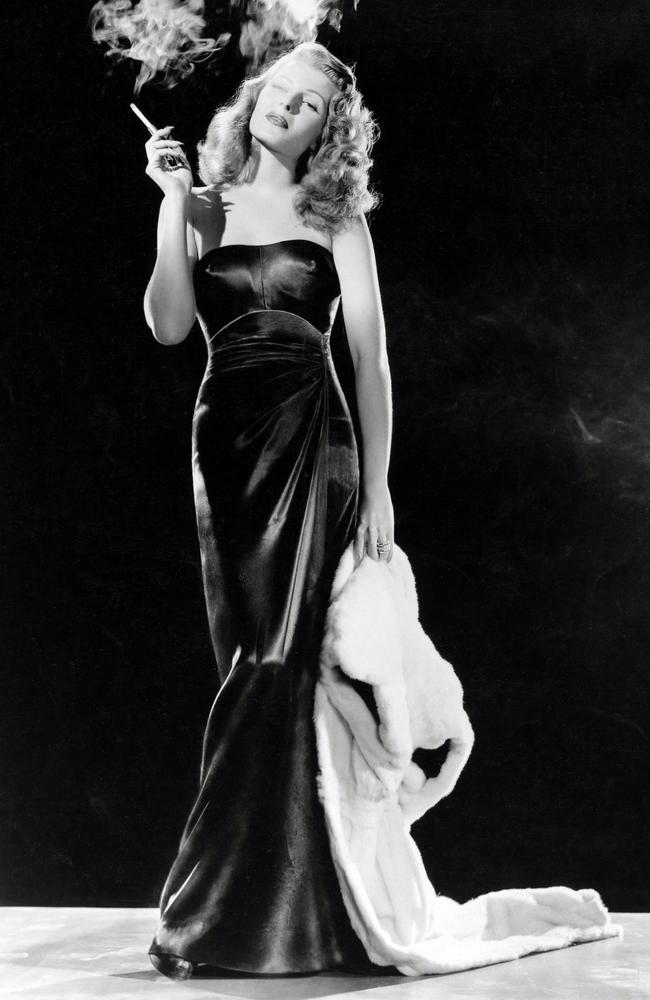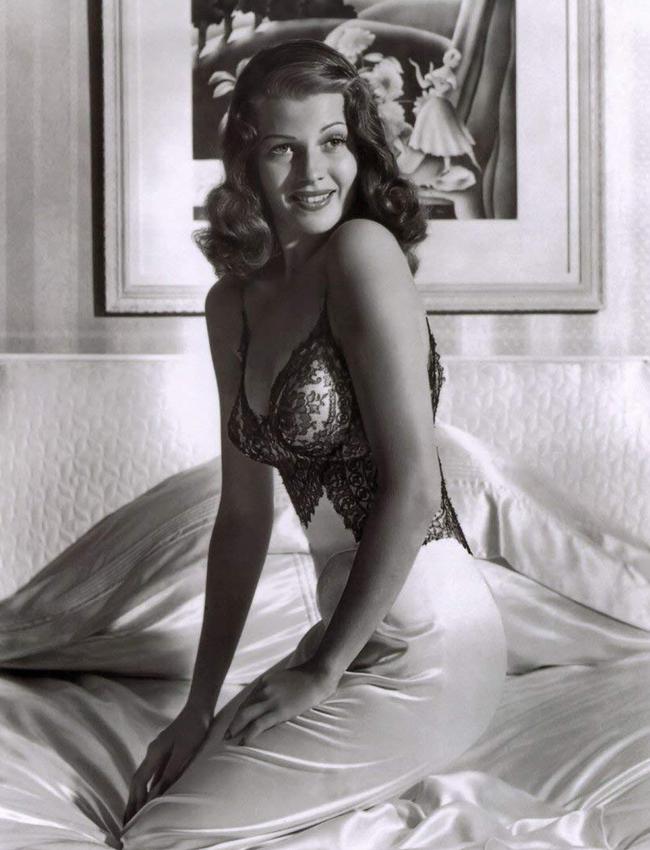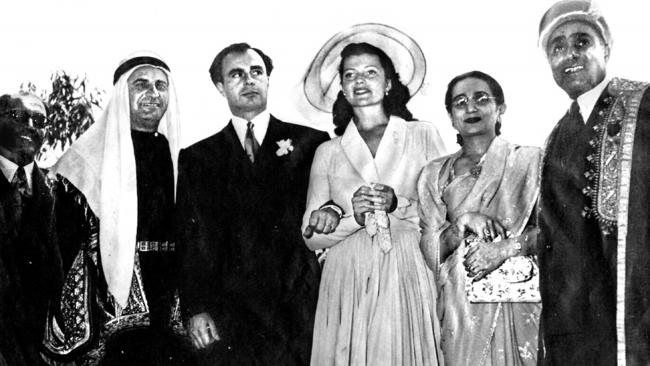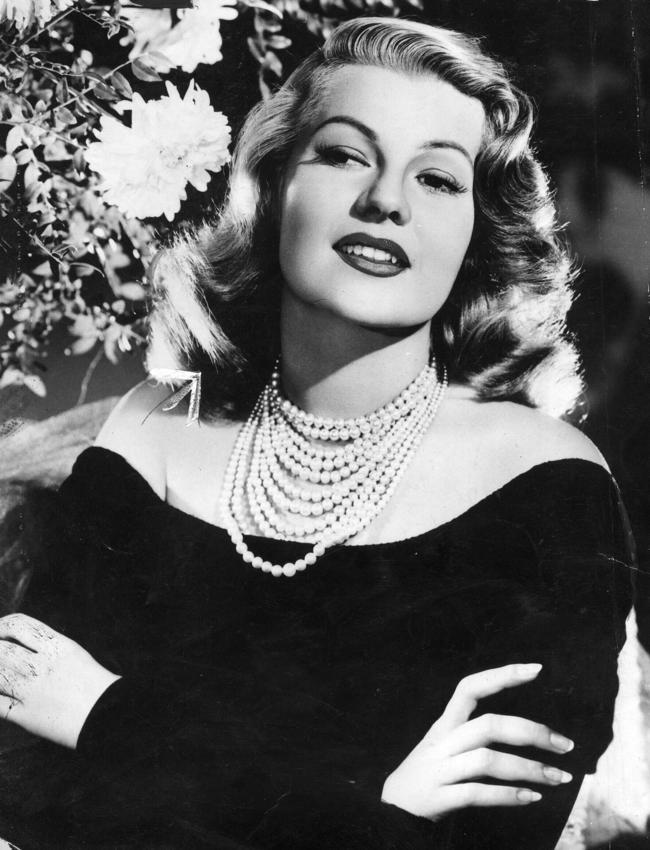Hollywood star and pin-up girl Rita Hayworth was a contradiction
A CONFIDENT sex goddess on screen but a shy girl in home own time, Rita Hayworth hid some secrets.

Today in History
Don't miss out on the headlines from Today in History. Followed categories will be added to My News.
SHE was a confident sex goddess on screen but a shy girl off it. She was a celebrated beauty on the cover of magazines, but they hid the years of treatments to make her look like someone she wasn’t. But most compelling of all, she had the reputation for being a powerful Hollywood star, but she felt like a damaged little girl inside.
Rita Hayworth was a complete contradiction, any way you looked at it.
From her very name, down to the colour of her hair and her on-screen image, she was a carefully manufactured package.
“The persona she projected of a self-confident sex goddess who could wrap the men of the world around her little finger effortlessly was a lie,” film critic Karina Longworth says in her podcast You Must Remember This. “Or maybe more accurately, it was an invention.”
Rita Hayworth was born Margarita Cansino in Brooklyn, New York, on October 17, 1918, 100 years ago today. She started dance lessons at the age of four and soon after the family moved to Los Angeles in 1927 began performing with her choreographer father, Spanish-born Eduardo Cansino, in sleazy bars and casinos.

In a 1989 biography If This Was Happiness, author Barbara Leaming says Hayworth’s father was also sexually abusing his young daughter. Petrified of revealing this ugly truth to the world, she became shy and introverted off the stage.
Her ugly truth, as she saw it, would influence a string of failed marriages — five in total — to men who tried to control her. The first occurred when she married Edward Judson at 18. He was more than twice her age and is said to have pimped his young wife out to whoever could further her career.
Judson was certainly unscrupulous, but Hayworth later said she wouldn’t have had a career in Hollywood without him.
She was signed to a six-month contract with Fox Film Corporation in 1935 and was cast in bit parts playing mostly foreigners. In an attempt to make her sound less foreign, the studio changed her name to Rita — a shorter version of Margarita. Soon after she signed a seven-year contract with Columbia Pictures and her surname was changed to her mother’s maiden name, Hayworth.

Her name wasn’t the only thing Columbia Pictures wanted to change.
“Essentially her hair was too thick, too dark, too curly and her hairline dipped too far into her forehead, in other words she was too visibly ethnic,” Longworth said.
“Rita submitted to two years of primitive electrolysis treatments which zapped and killed each hair follicle one by one at a cost of $10 per follicle, which Judson paid for.”
Her fame continued to rise during the early 1940s and she became Columbia’s biggest star. A 1941 Life magazine cover shoot in which Hayworth is perched on silk satin sheets wearing a black lace and satin negligee made her a pin-up star.
And it attracted the attention of her second husband, actor and producer Orson Welles. In 1946 Hayworth further perpetuated her femme fatale image by starring in the film Gilda, in which she performs a steamy striptease. Hayworth would famously say: “Men go to bed with Gilda and wake up with me.”

It was during the filming of this movie that an atomic bomb was scheduled to be tested in the Pacific Ocean carrying an image of the “bombshell”. Welles later told reporters his wife flew into a rage when she found out.
“Rita used to fly into terrible rages all the time, but the angriest was when she found out that they’d put her on the atom bomb,” Welles told biographer Leaming. “Rita almost went insane, she was so angry.”
By 1947 her marriage to Welles was over. In 1948, she travelled to Cannes where she was introduced to playboy Prince Aly Khan. After a year-long courtship, they wed in 1949. The first US actor to become a princess (paving the way for Grace Kelly years later), Hayworth left Hollywood and sailed for France, breaking her contract with Columbia. But that union was also short-lived and Hayworth was back in Hollywood and back in movies by 1952.
She continued to work through the 1950s, but by the end of the decade she had been replaced by Kim Novak as Columbia’s biggest star.

Both Welles and her daughter to Prince Aly Khan, Princess Yasmin, claimed Hayworth was an alcoholic for much of her later career. Sadly, alcoholism also hid the early signs of Alzheimer’s disease.
During her final film, Last Wrath Of God, in 1972, it has been reported that Hayworth had such trouble remembering her lines her scenes were shot one line at a time.
Diagnosed with the disease in 1981, she died from complications associated with Alzheimer’s in 1987. She was 68.

